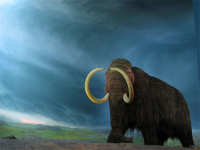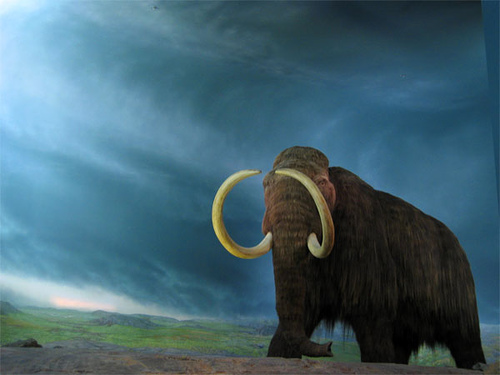
There is a lot of information about the extinct woolly mammoth.
- Woolly mammoths are large, extinct mammals from prehistoric northern Europe, Asia and America, that are said to be relatives of Asian Elephants.
- Woolly mammoths have the scientific name of Mammuthus primigenius and are one of ten species of mammoth from the family Elephantidae, the family of elephants and mammoths.
- Woolly mammoths reached 1.8 to 4 metres (6 to 13 feet) in height and weighed up to 4 to 8 tonnes (4.4 to 8.8 tons); had dark hair coats coloured mostly black or brown; as well as small ears and short tails that reduced the chance of frostbite.
- Woolly mammoths boast some of the most collected data of all prehistoric animals, due to extensive skeletons, preserved bodies, fossils and cave depictions.
- Woolly mammoths had two long, sloped tusks that grew to be 1.5 to 4.2 metres (5 to 14 feet) in length, and three quarters were generally visible, while the tusks were probably used for defense and species fighting in the form of hitting.
 Replica of a Woolly Mammoth
Replica of a Woolly Mammoth
Image courtesy of Rob Pongsajapan/Flickr
- Woolly mammoths lived in large herds similar to today’s elephants, while weak and young mammoths were preyed on by pack dog species and large animals from the cat family, and the typical life span ranged from 25 to 80 years.
- The diet of woolly mammoths probably consisted of vegetation including shrubs, trees, fruit, moss, nuts and smaller plants.
- Woolly mammoths are often depicted in ancient cave paintings, while the bones were used by people to create human shelters and the tusks made into weapons and tools.
- Woolly mammoths probably became extinct due to hunting and habitat changes, and the last mammoths probably lived isolated in the Arctic Ocean on Wrangel Island.
- Some frozen woolly mammoths contain DNA that could possibly be extracted and cloned, although this popular theory is controversial, due to financial costs and ethical issues.
Bibliography:
Woolly Mammoth, 2013, A-Z Animals, http://a-z-animals.com/animals/woolly-mammoth/
Woolly Mammoth, 2014, Wikipedia, http://en.wikipedia.org/wiki/Woolly_mammoth






